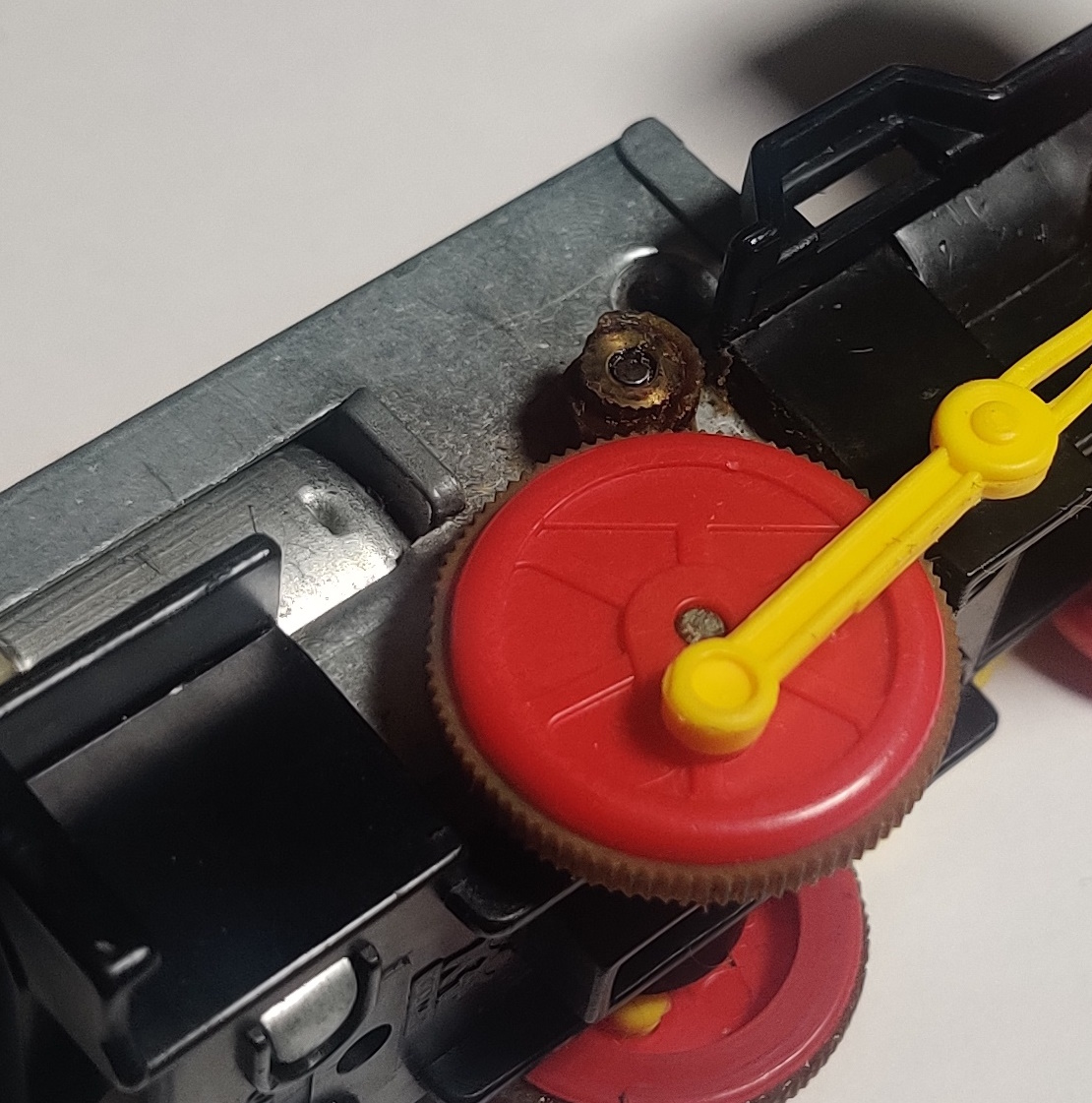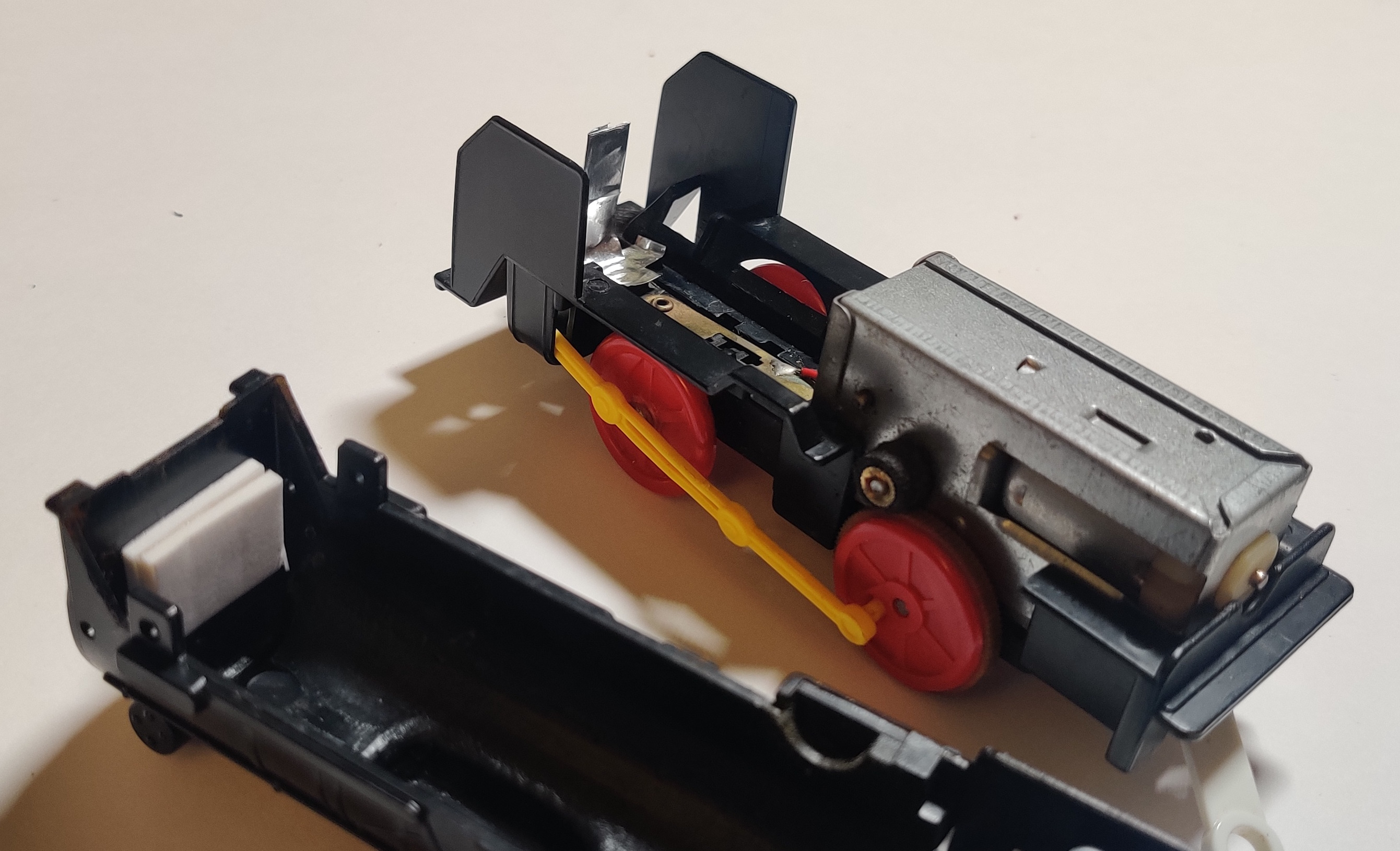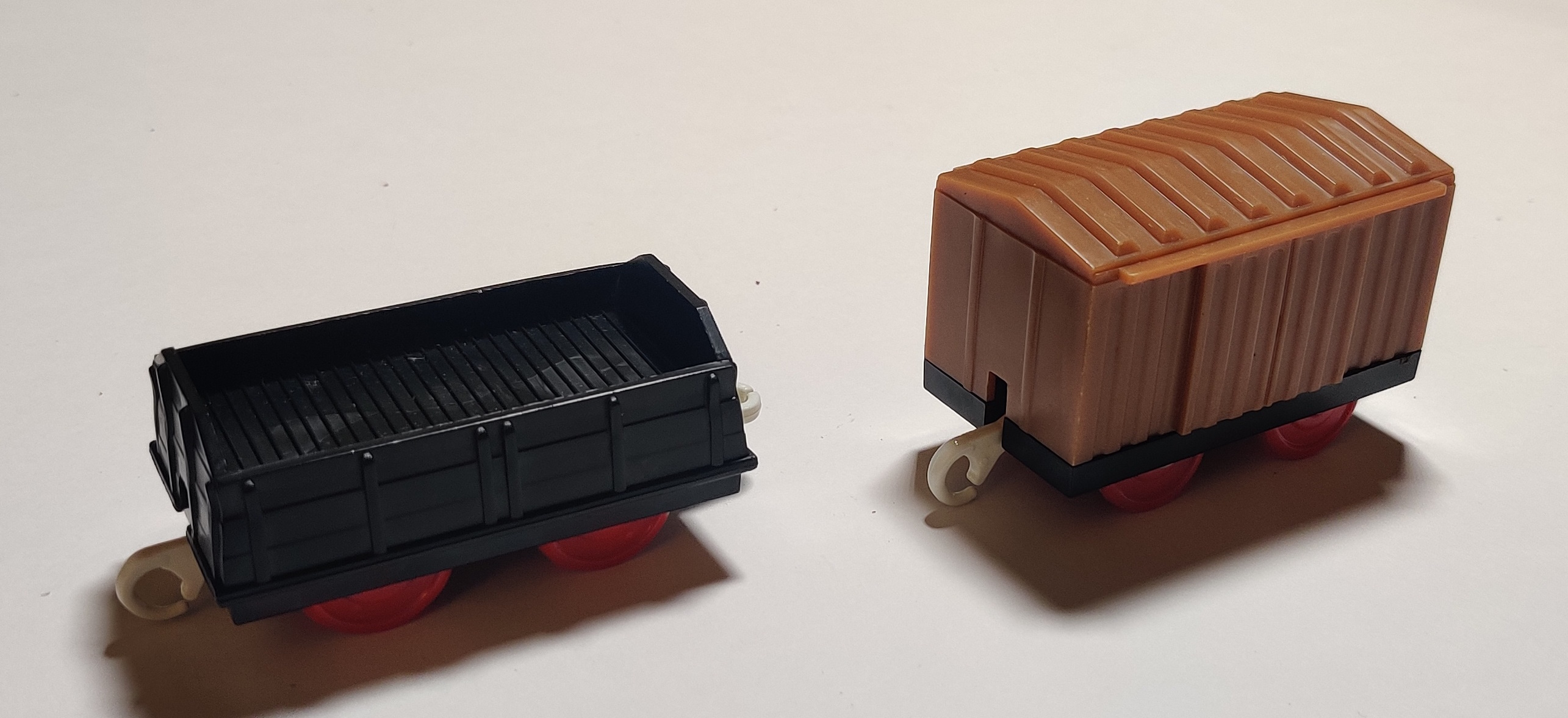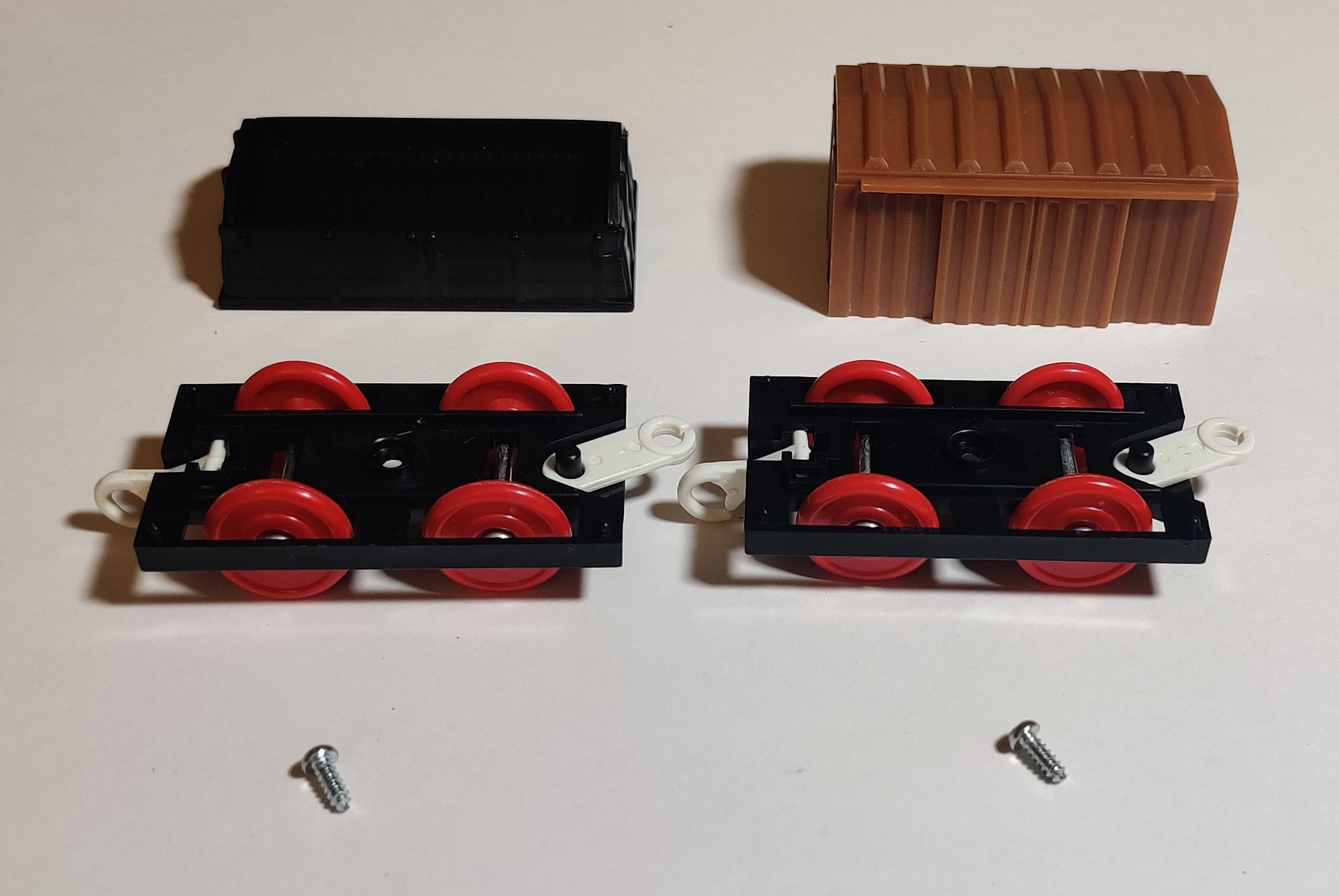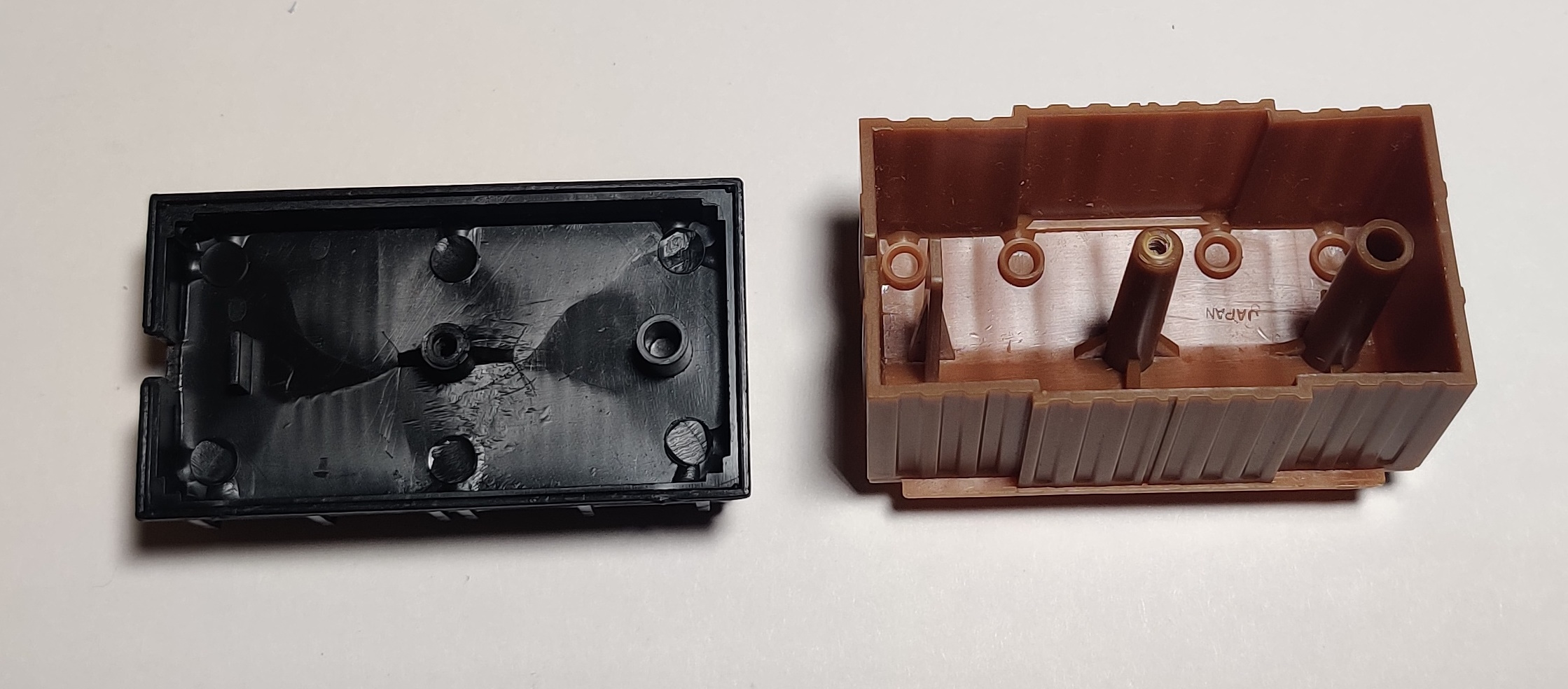fall inside a hole
Basic No.1 Set D-51 (1982)
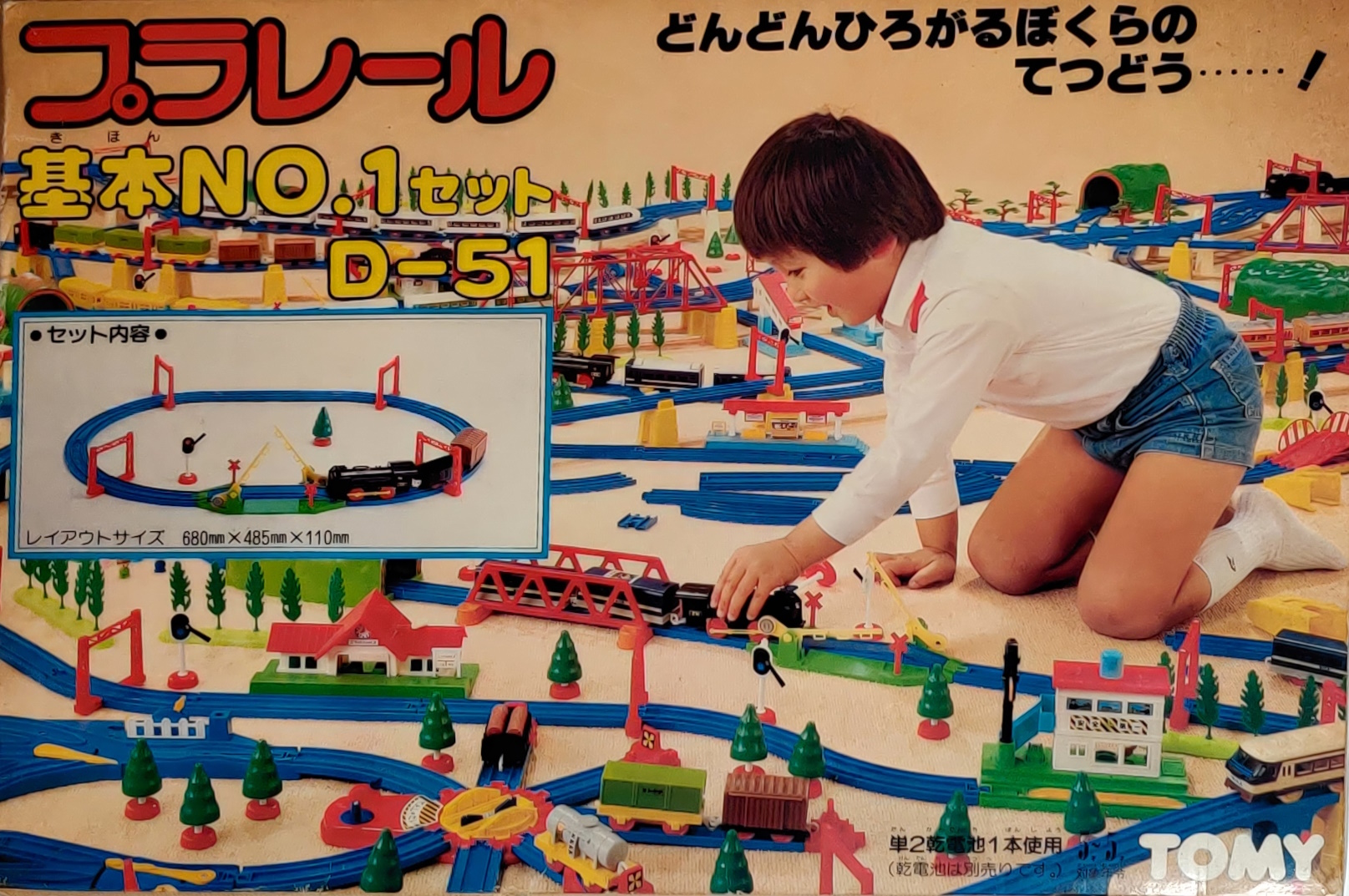
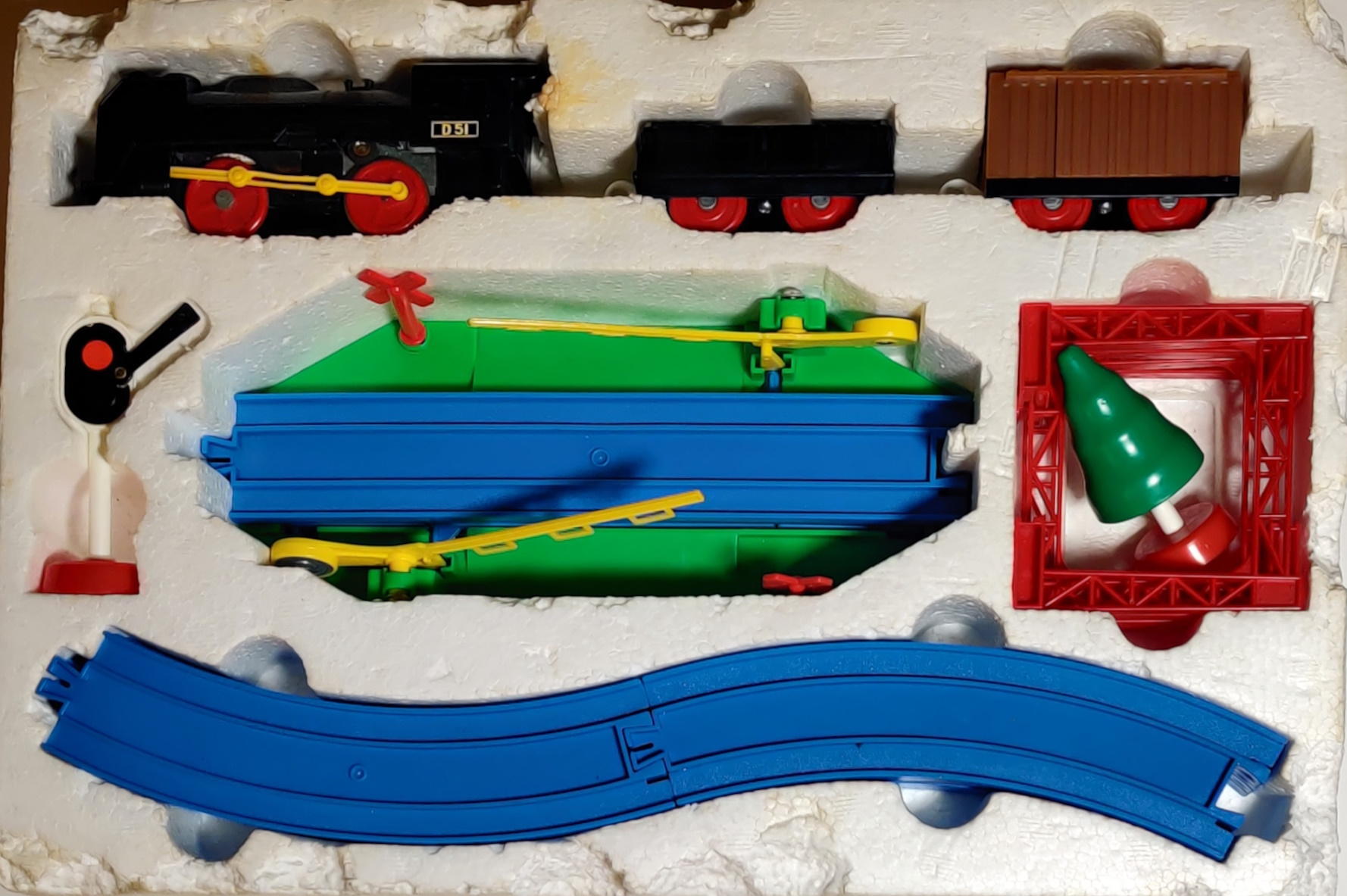
The Basic No.1 D-51 Set (基本NO.1セツトD-51) was released in 1982 and features a small starter set-type layout. From nearly its inception and up to the 80s Tomy released smaller sets with a variety of engines and common accessories as numbered starter sets. A made in Japan D51 leads two of the common older freight cars from the era. The set includes a standard Plarail signal and tree, four overhead wire catenaries, and a period old-style green railway crossing. The new curvy Tomy logo first seen in red on two starter sets released previously in the year shows up in white on the bottom right corner of this set's box. The cover photo for the box actually shows a child playing with the Melody D51 set released in 1983 which included the D51 with coaches and iron bridge with orange supports shown. The box for that set uses the same photo.



This set originally released in 1977 in the yellow box style. A boxed example of that version of the set can be seen in the Plarail Museum. A boxed copy of this 1980s version of the set can also be found in the Plarail Museum. The TT-36 designation on my box means it was printed in 1987, right at the very end of this style of box's use. The photographs of the set may be from the original late 1970s photoshoot - they show the later 70s style of Railroad Crossing with plastic pegs, while both early 80s examples and this later 80s copy include the later screw type crossing, as this change happened some time around 1980. In later 1987 the set was rereleased again in the original yellow stripe packaging and was updated to use the New Railroad Crossing.
Set contents| Quantity |
Item |
Photo |
|---|---|---|
| 3 pieces | D51 with log car and box van |
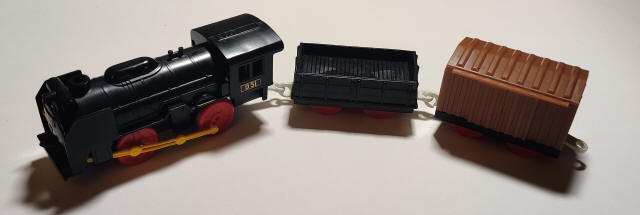 |
| 1 | R-01 Straight Rail |
 |
| 8 | R-03 Curve Rail |
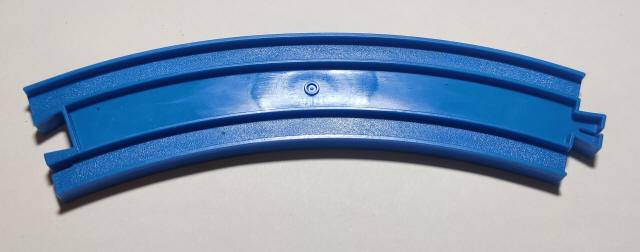 |
| 1 | Railroad Crossing (screw type) |
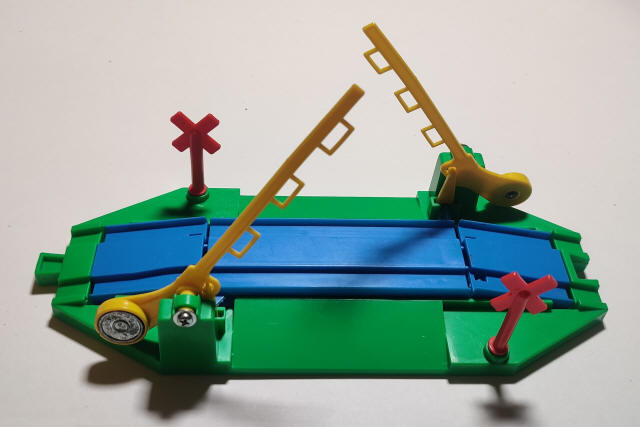 |
| 4 | Catenary |
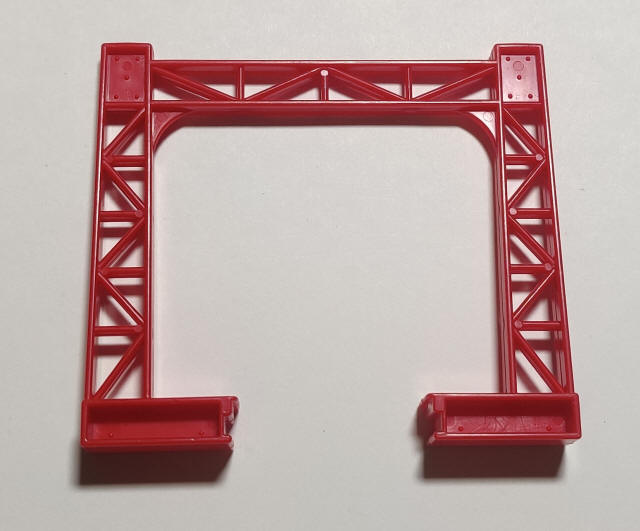 |
| 1 | Standing Tree |
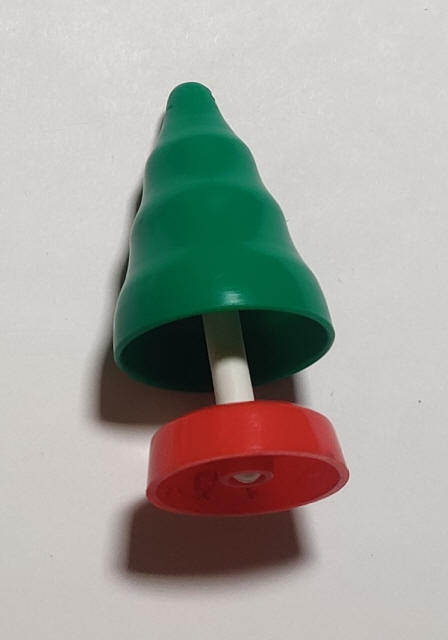 |
| 1 | Signal |
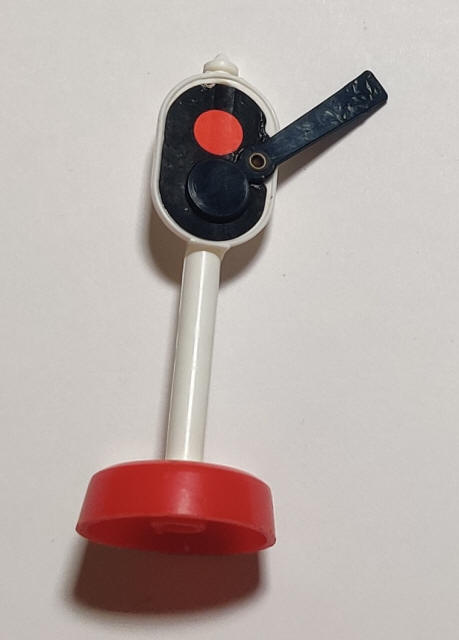
|
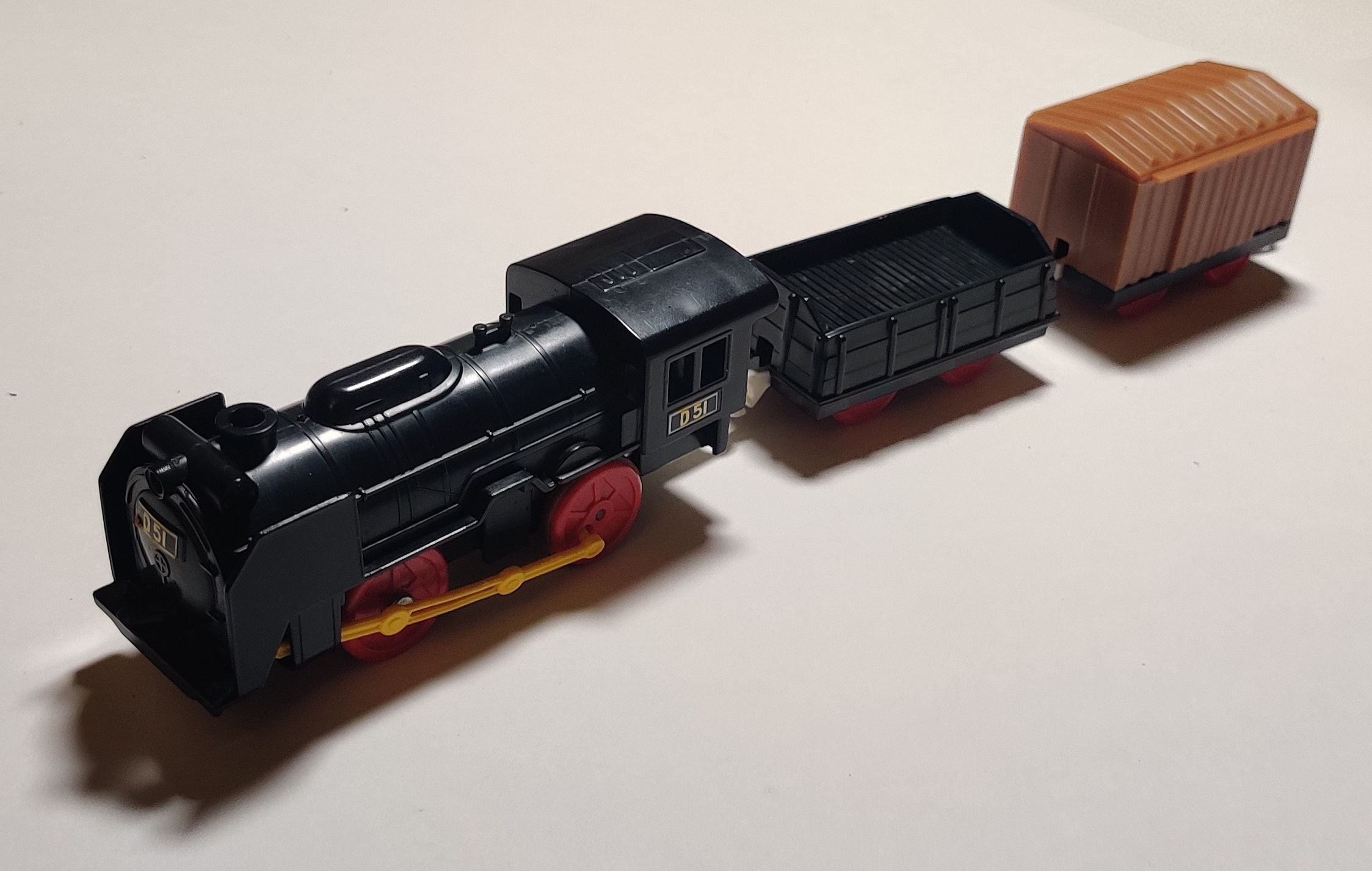
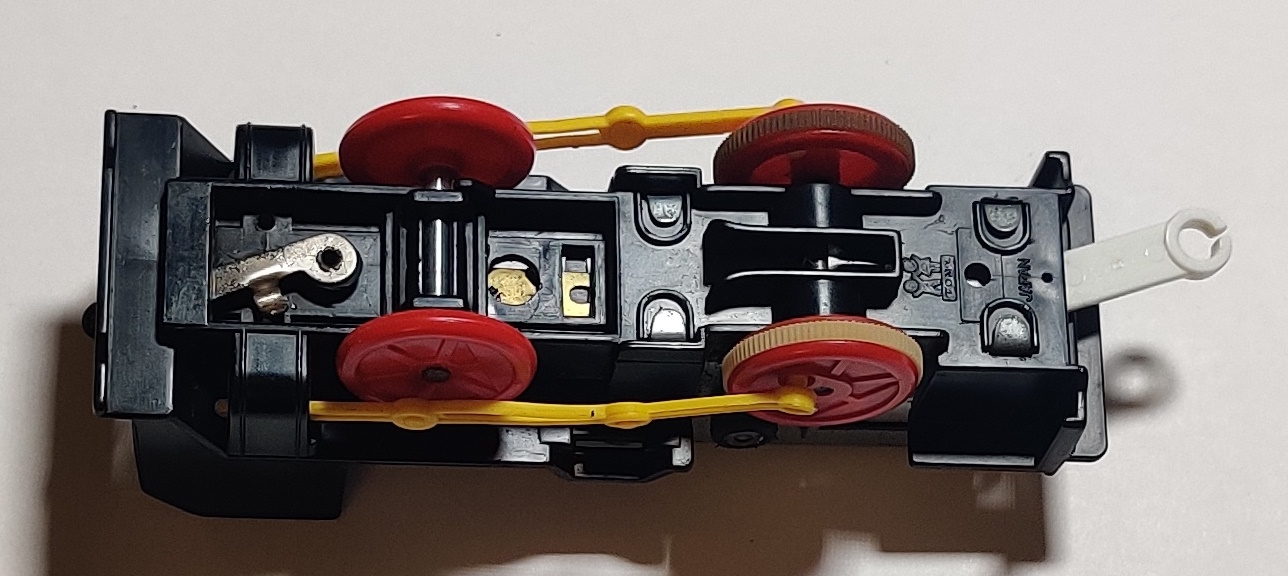
The D-51 is both a classic Japanese steam engine and a classic Plarail train. Over 1000 D-51 were built between their development in 1935 to the end of their production in the mid 1940s, with a handful of D51s built for export in the very early 1950s. The Plarail D-51 was originally introduced in 1970 and was one of the first Plarail trains based on a real class of locomotive. The D51 in this set is an older made in Japan metal rim-drive gearbox type with the "chuffing" clicker and uses the early 1980s tooling for the D-51 Locomotive with Light even though it does not include one. The rolling stock includes a black log car with no load and a brown box van, also made in Japan. All rolling stock uses the older single-split coupling type.
Like pretty much all Plarail of this age, the original rubber components of the rim-drive mechanism were hardened and cracked. The process I used to repair this D51 is covered on this page about the repair of rim-drive Plarail gearboxes. The engine had been left with a leaking battery inside which corroded the copper battery contact strips. The front battery contact is reinforced with tin foil and conductive metal tape and two adhesive pads in the top shell make sure the loose contact makes good contact with the battery when attached.
The small black log truck and the brown box van were both very common freight cars in this era, and were part of a series of short mid 70s freight cars that shared the same small chassis. Years later, both of these toolings would be used for the grey log wagon and salt van included with Henry from the Thomas the Tank Engine series.
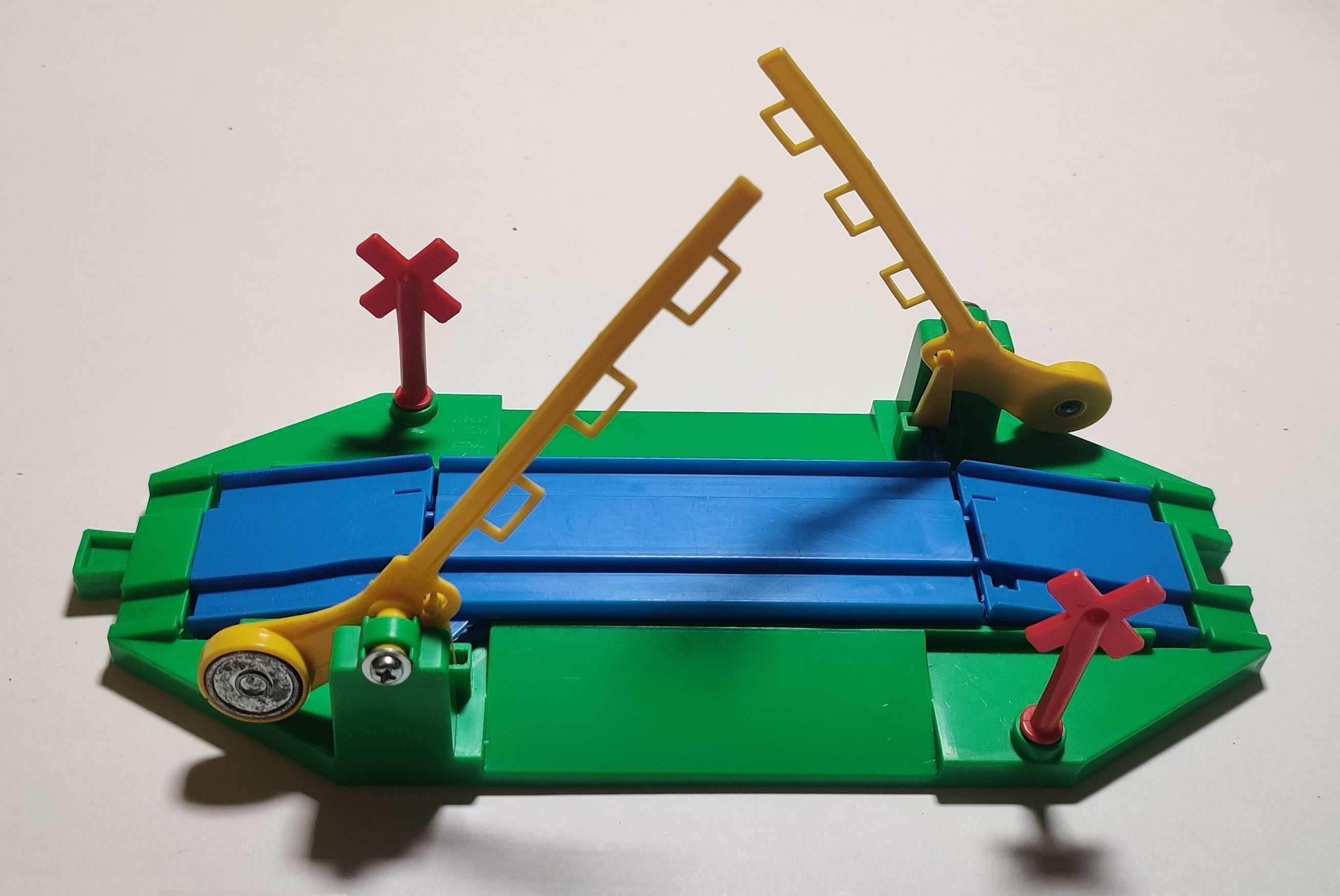
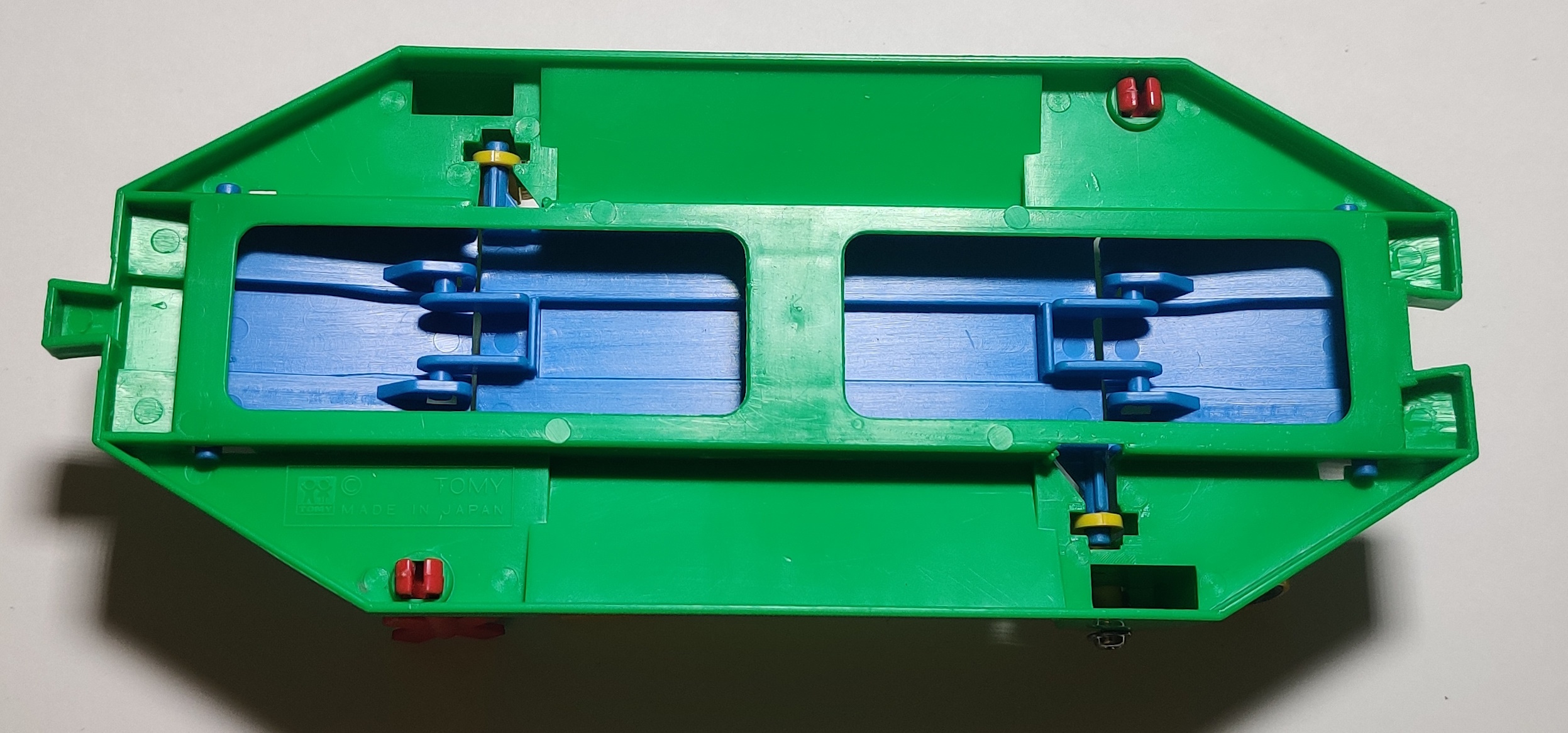
The Railroad Crossing in this set is made in Japan and was first released in 1970.
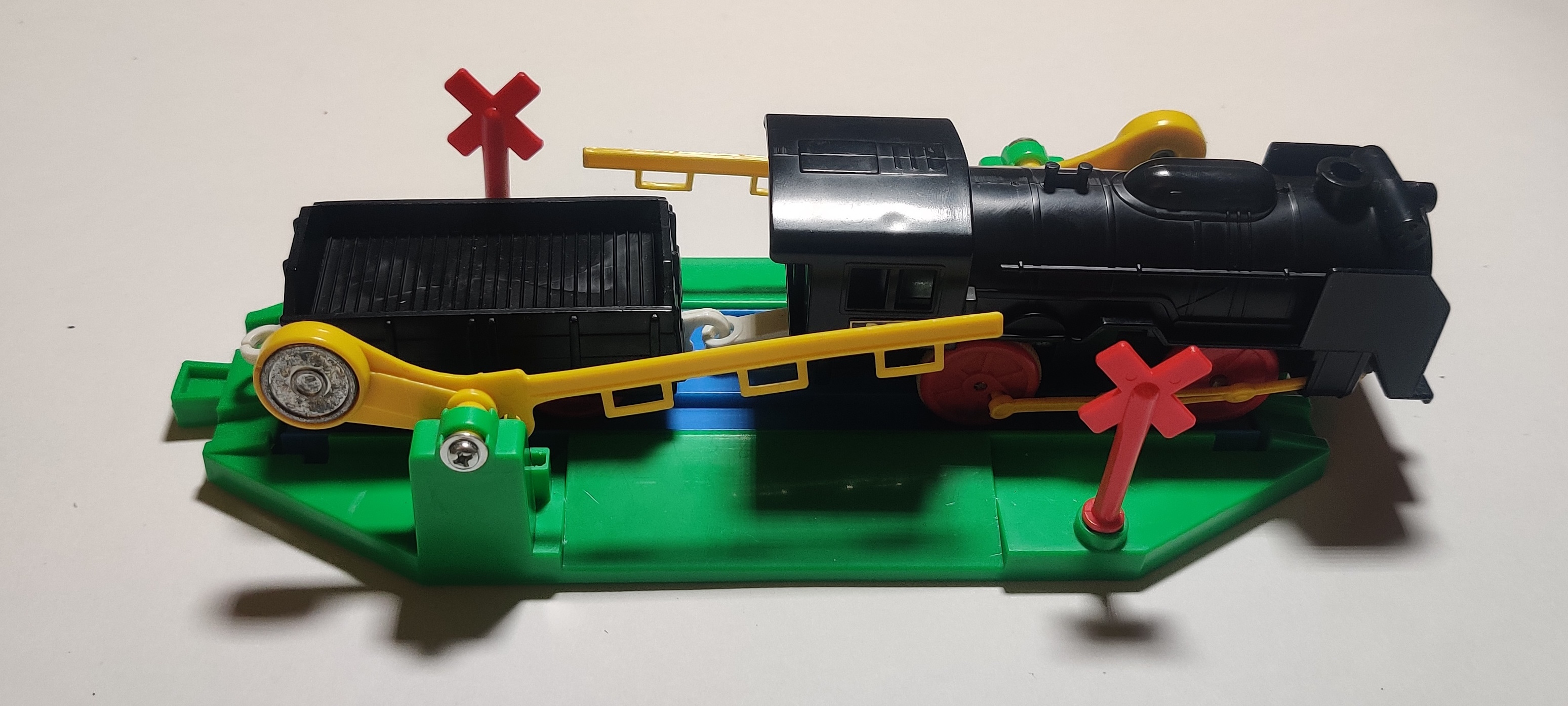
The crossing uses a similar counterweighted barrier system as 1987's New Railroad Crossing but has static red railroad crossing signs clipped into the base instead of the LEGO-compatible black signs with stickered details of the updated crossing.
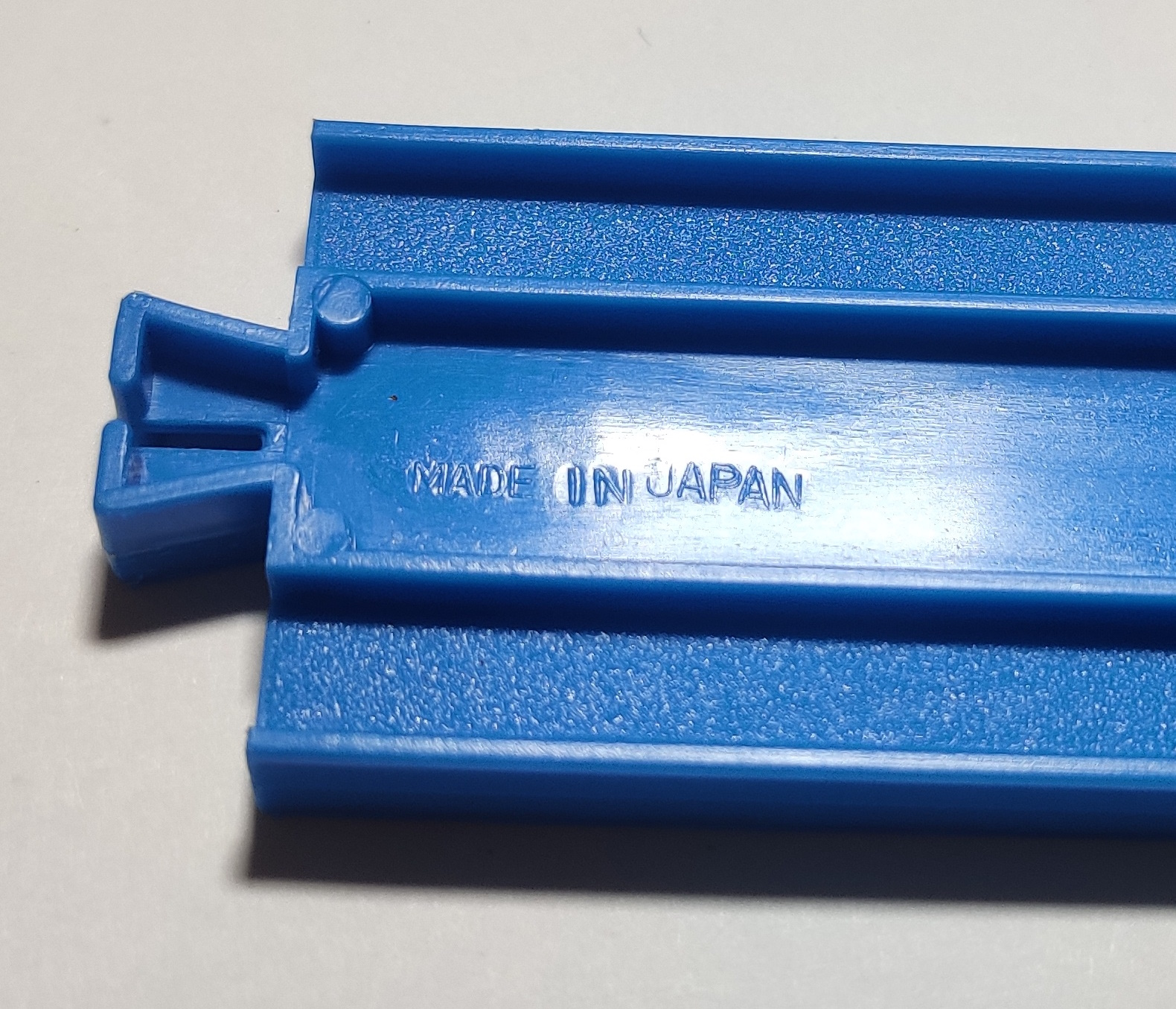
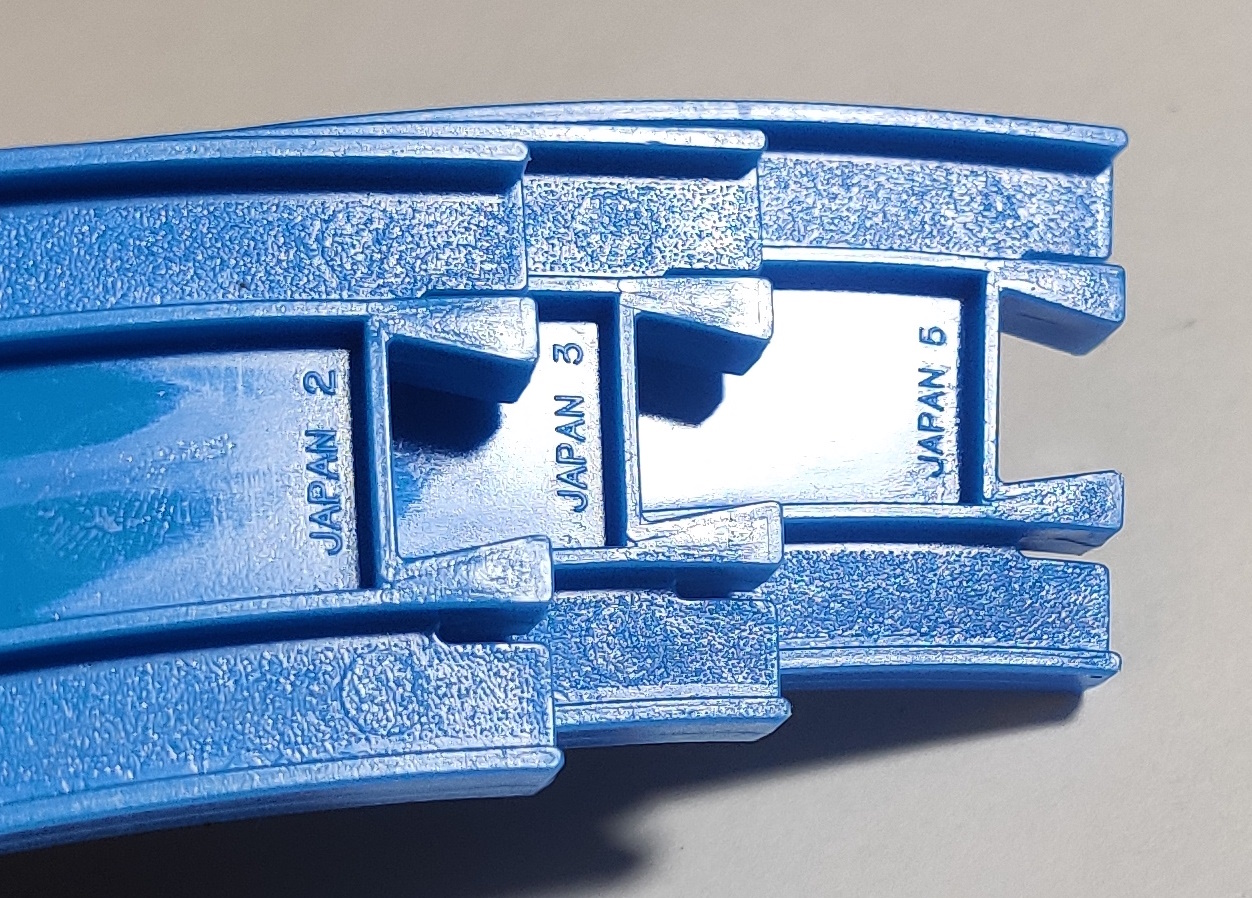
As with everything else in the set, the track is made in Japan and is of the older roughtop variety. The straight is of the "messy" made in Japan mark variety and the corves have additional molding numbers probably related to which slot in a larger mold they came out of so that quality control could identify if a particular slot was turning out bad rails.
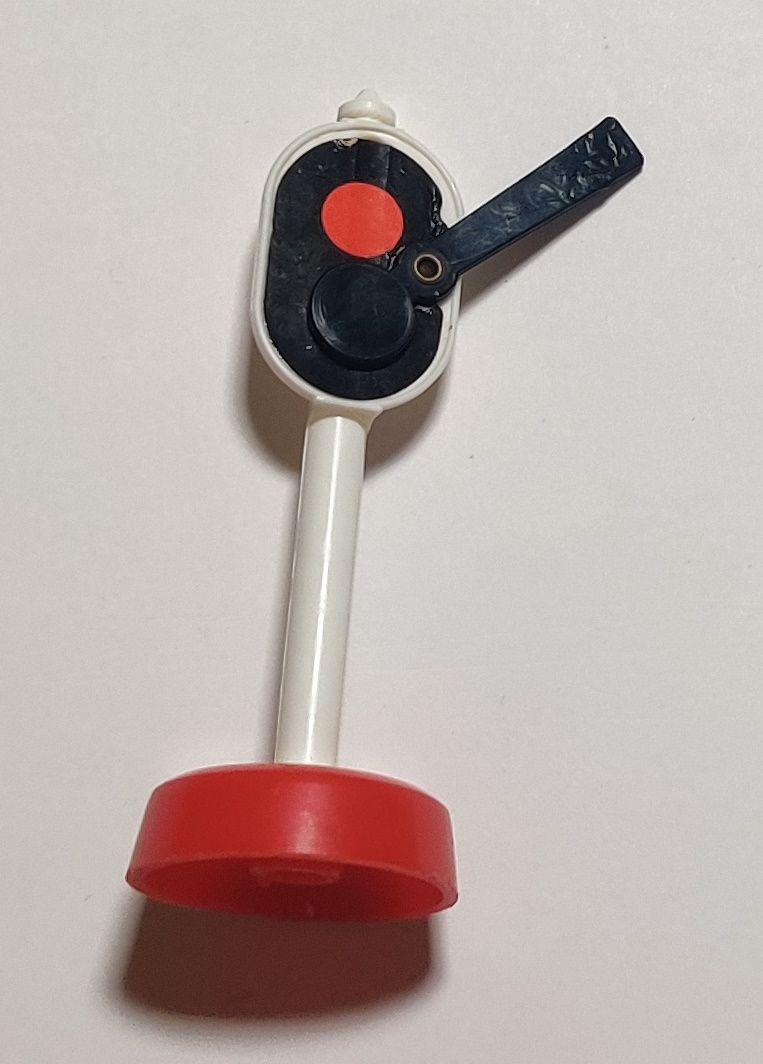
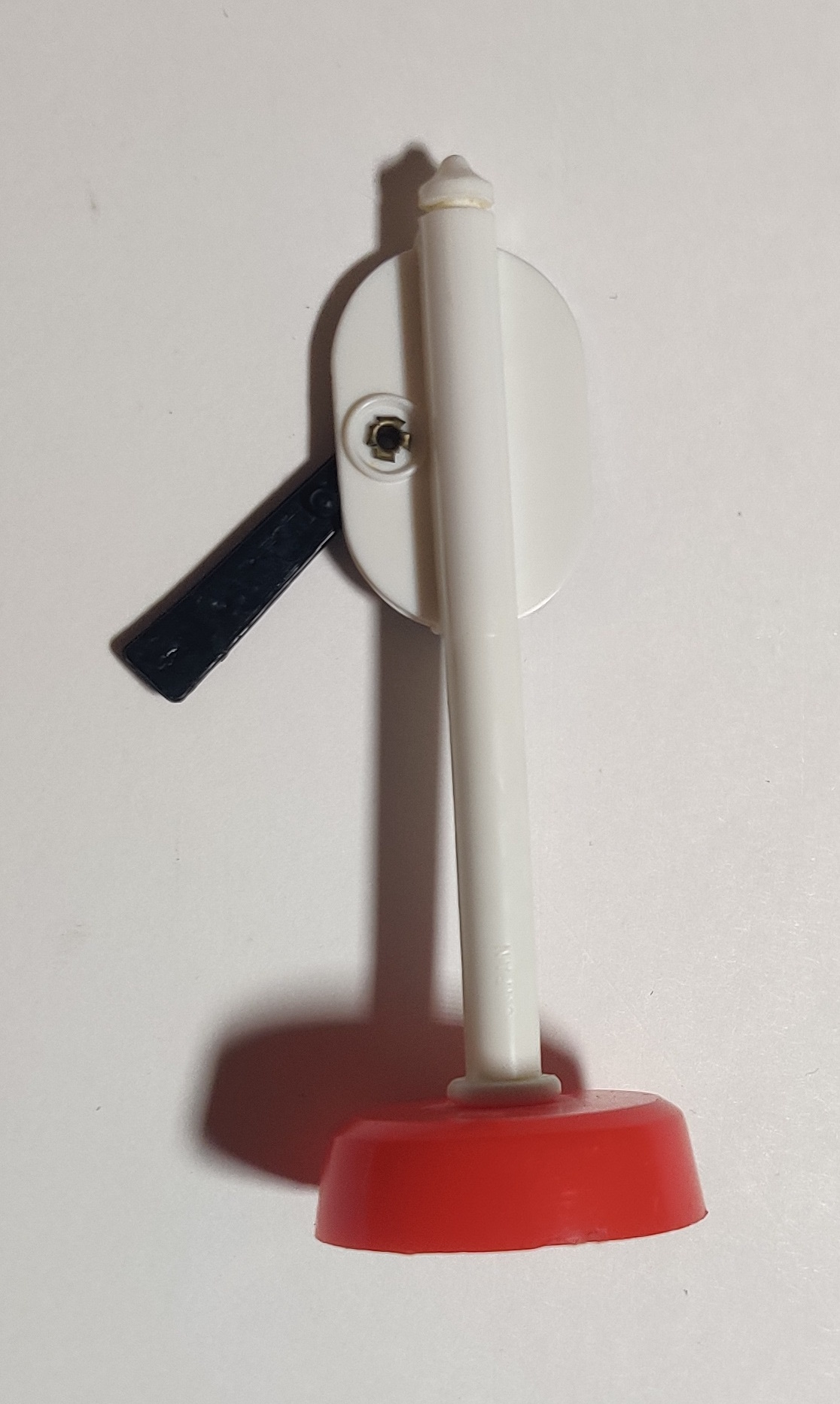
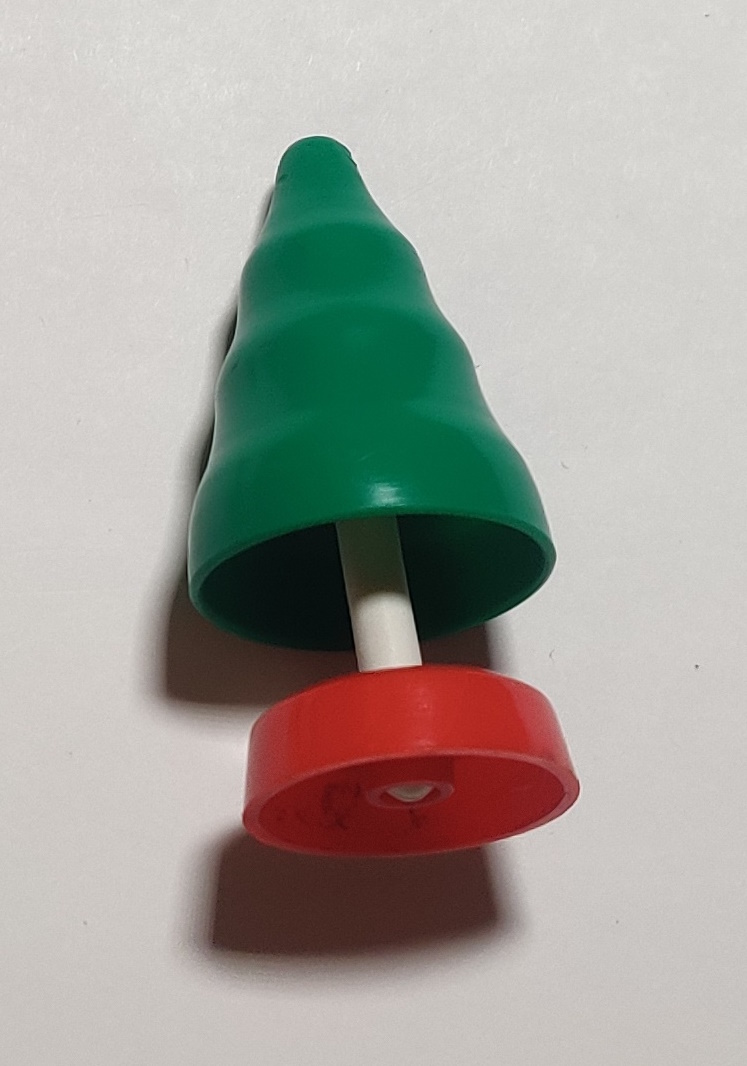
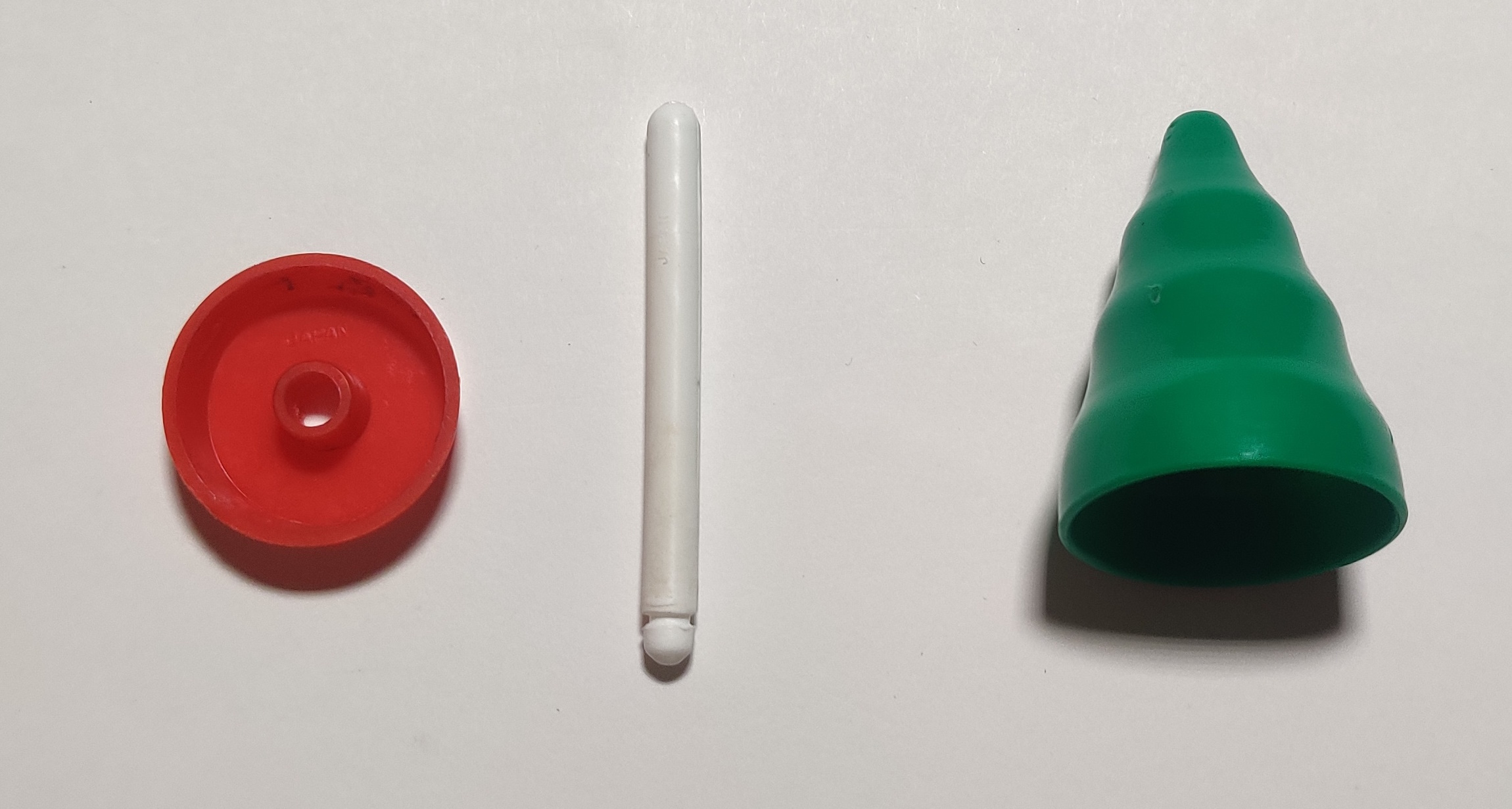
The made in Japan signal has the metal rivet holding the arm onto the signal body instead of the later all plastic design. The Japanese tree is a standard tree with all components marked as made in Japan somewhere.
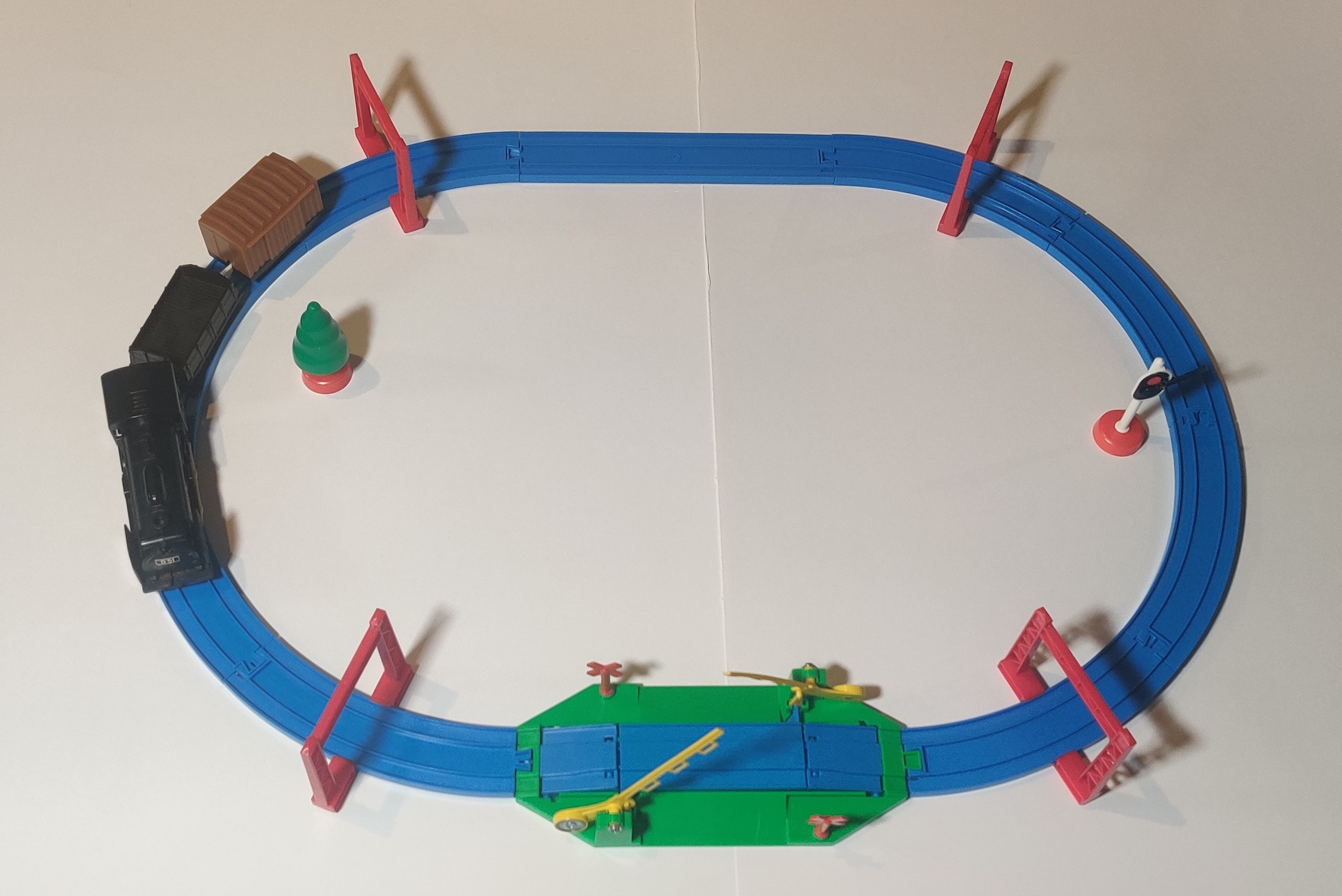
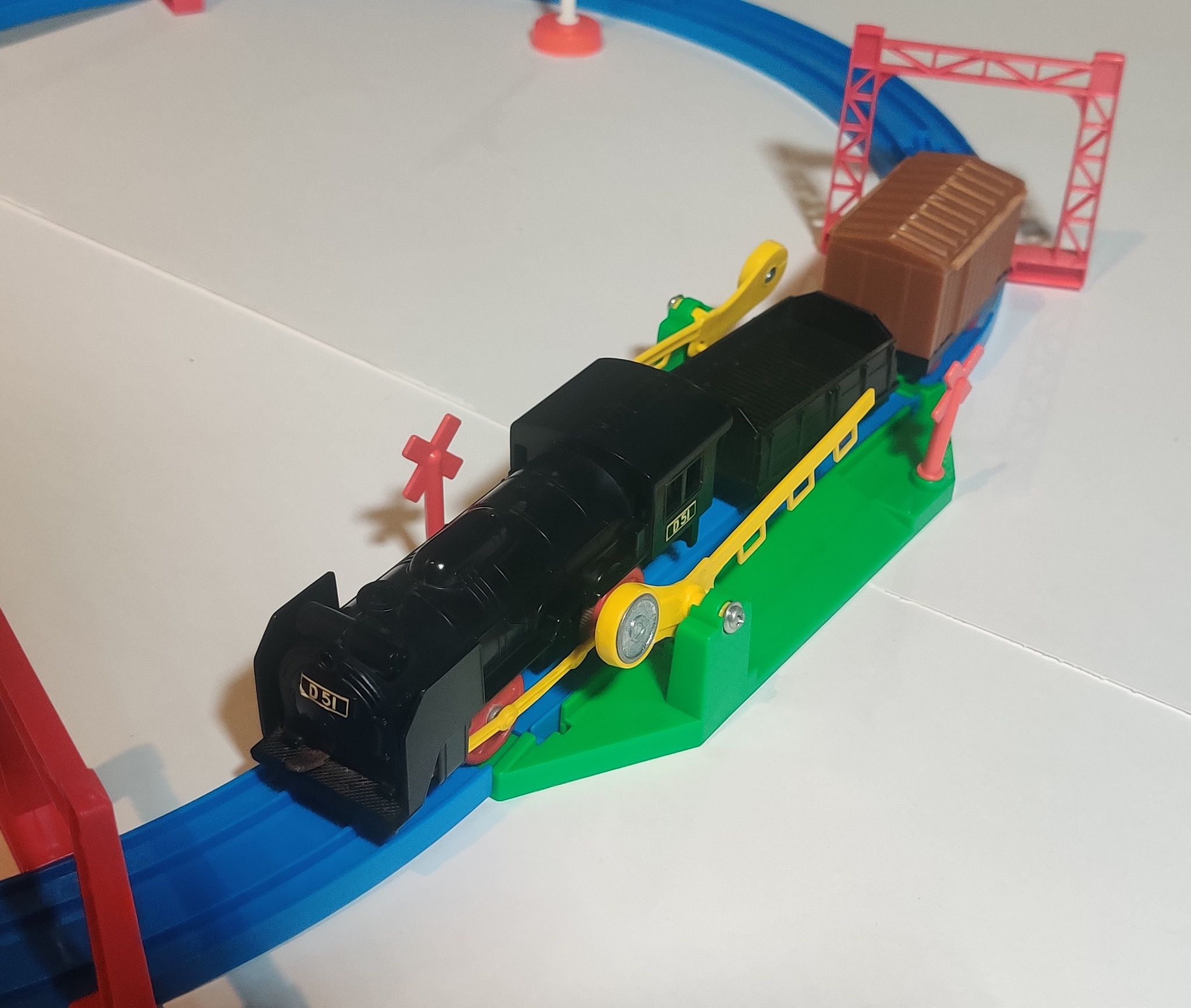
Although clearly a very basic set, as someone who absolutely loves how well the 70s refined the cute "chibi" styling of the early days of Plarail I still find this set that uses lots of holdover parts rather charming. I love all the variants of the 1970s D51 molding and the inclusion of the "chuffing" noisemaker adds to the set's charm (although it probably annoyed a lot of parents). The set is certainly small and contains just about the most basic layout you could reasonably get away with. All the components are fairly common and this set could easily be pieced together.
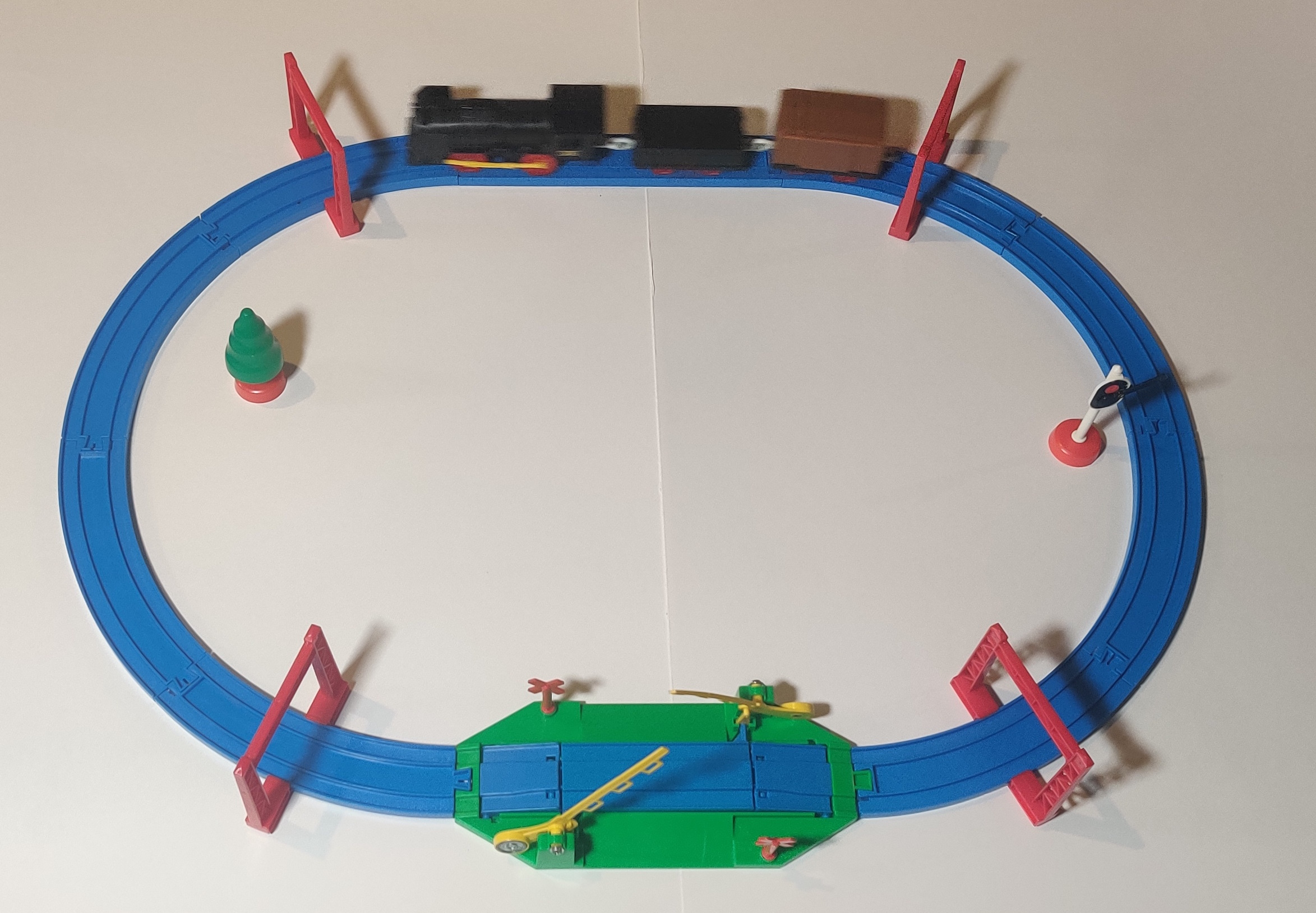
Click for video with sound
| Set name | Basic No.1 D51 Set 基本NO.1セツトD-51 |
Release period | 1982-1987 |
| Train rating |
    
| Track rating |
     |
| Accessory rating |
     | Overall |
     |
| Notes: |
